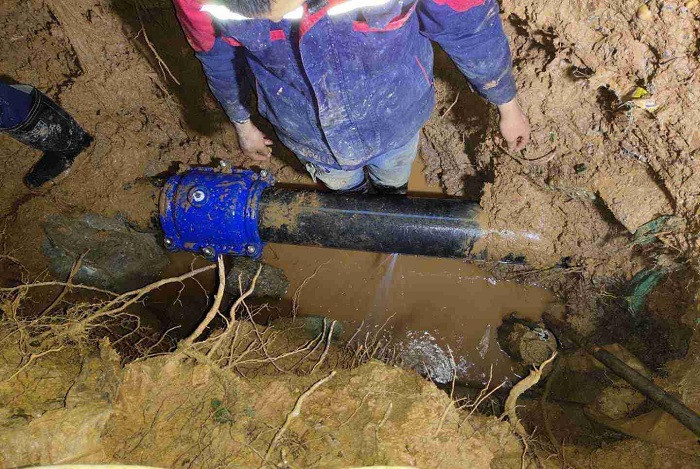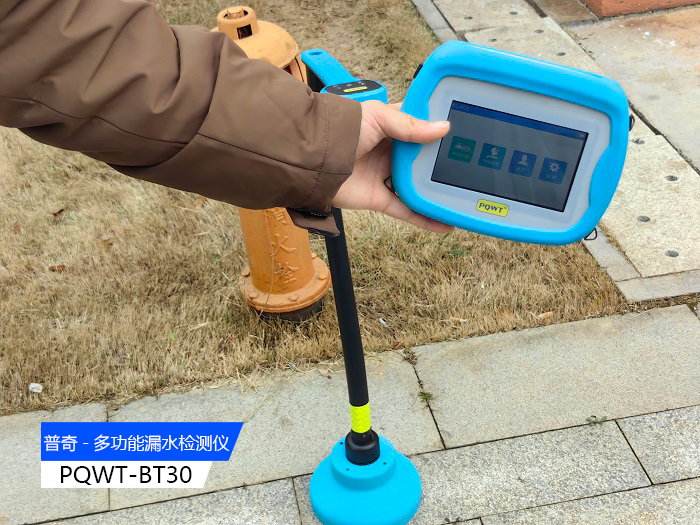When faced with a potential water supply pipe leak, timely and accurate detection is crucial. The following will introduce you to several comprehensive and detailed water leakage detection methods to help you effectively locate and solve water leakage problems.

Method 1: Systematic Inspection Method
This method is like exploring an underground labyrinth, starting from the water source and checking each part of the water supply system one by one. First, check the faucets and connections to see if there are signs of leakage. Once these obvious areas have been ruled out, it is time to turn your attention to the water pipes that are buried deep underground. If necessary, you may even need to dig into the ground for a deeper inspection.
Additionally, you can put a line of defense in front of your home's water meter by adding a check valve to monitor the meter's rotation. Any unusual rotation of the water meter could signal water theft or leakage, which needs to be dealt with promptly.
Method 2: Static water pressure detection method
First, close the main valve of the water pipe and let the water flow temporarily static. Next, open the faucet in the room and let it flow for a period of time to ensure that there is no residual water droplets in the water pipe. Then, close the toilet tank, washing machine and other water storage equipment, water inlet switch to ensure that no water input. Finally, reopen the main water pipe valve to allow water flow to resume.
Over the next 20 minutes, carefully observe the water meter for any movement. Even the slightest movement can signal a water leak. If the water meter is stationary, the system is probably leak-free. Note, however, that it may be difficult to tell right away if there is a malfunctioning water meter or if there is a tiny leak in the plumbing. Therefore, after completing the above tests, it is essential to conduct a water pressure test experiment. Usually, the water pressure is set at 8 kilograms and observed continuously for 20-30 minutes to ensure the integrity of the water pipes.
Method 3: Dynamic water pressure testing method
First, turn off the main switch of the water pipe, and then turn on the faucet in the room to let the water flow fully. When the water stops coming out of the faucet, turn off all the faucets, and at the same time, turn off the water inlet switch of the toilet tank and water storage equipment such as washing machines. Next, turn the main water line switch back on and wait 20 minutes.
During this time, keep a close eye on the water meter for any movement. Any small movement could be a sign of a water leak. If the meter responds, further inspection is needed to determine the exact location of the leak; if the meter doesn't move, it could mean that everything is fine.
Method 4: Underground pipe Leak detector method

Use an underground pipe Leak detector to locate the leak more accurately. First, connect the underground pipe Leak detector's main unit, headphones and sensors. Then, turn on the switch, put on the headset and place the sensor on the pavement above the pipe. Place the sensor step by step and listen to the sound according to a fixed pace length.
The closer you are to the leak, the stronger the signal; the farther you are from the leak, the weaker the signal. By comparing the strength of the signal between different points, the location of the leak can be pinpointed. However, when using the Underground Pipe Leak Detector, care needs to be taken to consider a variety of factors, such as the direction of the leak break, tees, bends, water pressure, depth of burial, buried layers, etc. These factors may have an impact on the detection results. All of these factors may have an impact on the detection results, so comprehensive consideration and analysis is required.
Through the comprehensive application of the above four methods, you can more comprehensive and detailed detection of water supply pipe leakage. Timely detection and solution of water leakage problems can not only avoid energy waste and environmental pollution, but also ensure the stable operation of the water supply system and normal water use by users.








